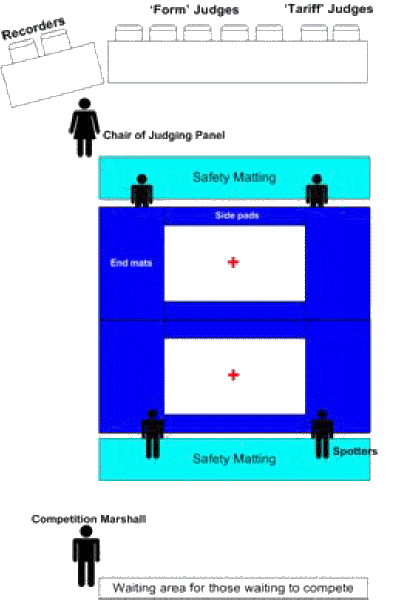OCR PE Unit 6.5
Gymnastics Based Sport - Trampolining
Basic Skills and What I have improved in
I have improved...the form of the routine
I have improved...the complexity and difficulty of the moves
I have improved...the variety of moves
I have improved...my balance
What have I done to improve? What drills have I used?
I have done two drills to improve my performance in trampolining. At the moment I can perform simple jumps with OK form and good balance.
To improve my balance I did a drill when I purely focused on landing on the cross and to improve my form I only performed straight jumps.
Straight Jump Drill -
In this performance I pointed my toes well, kept a straight posture and kept a fairly good balance.
Landing on the cross drilll -
In this performance the majority of the jumps were performed accurately and I landed on the cross around 70 - 75% of the time.
These drills strongly helped improve the skill level that I am at (which is just over beginner level) and benefited different aspects of the routines I perform. My skill level is shown below -
Video Analysis - Skill level
Simple routine in 3 different forms, straight, piked and tucked -
Rating: 8/10
Routine showing bad form and balance before I performed the drills -
Rating: 4/10
Skill Level Chart
Begginner My Skill Level Advanced
Evaluating my Performance
In the videos I showed:
Good technique
Accurate routine
Looked fairly well rehearsed
I should work on my balance
I should work on my form
Basic Skills and What I have improved in
I have improved...the form of the routine
I have improved...the complexity and difficulty of the moves
I have improved...the variety of moves
I have improved...my balance
What have I done to improve? What drills have I used?
I have done two drills to improve my performance in trampolining. At the moment I can perform simple jumps with OK form and good balance.
To improve my balance I did a drill when I purely focused on landing on the cross and to improve my form I only performed straight jumps.
Straight Jump Drill -
In this performance I pointed my toes well, kept a straight posture and kept a fairly good balance.
Landing on the cross drilll -
In this performance the majority of the jumps were performed accurately and I landed on the cross around 70 - 75% of the time.
These drills strongly helped improve the skill level that I am at (which is just over beginner level) and benefited different aspects of the routines I perform. My skill level is shown below -
Video Analysis - Skill level
Simple routine in 3 different forms, straight, piked and tucked -
Rating: 8/10
Routine showing bad form and balance before I performed the drills -
Rating: 4/10
Skill Level Chart
Begginner My Skill Level Advanced
Evaluating my Performance
In the videos I showed:
Good technique
Accurate routine
Looked fairly well rehearsed
I should work on my balance
I should work on my form






















